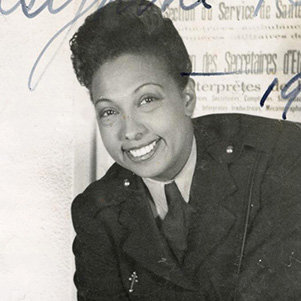Throughout my career as a general practitioner and therapist, the doctor–patient relationship has been a source of both anxiety and immense satisfaction. And when I forayed into fiction writing, my first novel explored this very thing, albeit from the point of view of a doctor in psychological distress.
Over the years I’ve pursued further psychological training with the aim of improving my communication with and counselling of patients, and I now share what I’ve learned with medical students in my role as a facilitator in a Melbourne medical school. I’ve always been cognisant of the incredible privilege of my work. The word “privilege” can be a double-edged sword: I use it here to mean a sense of gratitude to patients for the trust they’ve placed in me. I’ve never thought of my medical degree as conferring privilege in the more negative sense.
I tell you all this because I feel the need to be straight with readers about my personal views about being a doctor. It’s in the context of a career focused on fostering better relationships with patients that I read Charlotte Blease’s Dr Bot: Why Doctors Can Fail Us and How AI Could Save Lives. It’s in this same context that I reflect on its content.
I’m not at all opposed to a book that explores the possibilities of AI in medicine. What I’m struggling with is the general tenor of this one. In fact, the purported premise of Dr Bot — that AI has the potential to address all the deficiencies of the current healthcare system — seems to me to be simply a smokescreen. The real agenda here, as I read it, is to demonstrate the inadequacies, not of the healthcare system in general, but of the medical profession in particular. In chapters with titles such as The Ailing Appointment, Doctor Deference, The Dark Art of Medicine — why it’s dark is left unexplained — and Humanizing Healthcare Without Doctors, Blease builds to her startling conclusion, that patients might be happier and healthier if doctors were sacked and AI put in charge.
I’m mindful that Blease, a health informaticist, would probably view my criticisms as an entirely predictable attempt to protect medical practice for my own benefit and that of my cronies. “Institutions will try to preserve the problem to which they are the solution,” Blease writes, citing the apparently well-known “Shirky Principle.” She continues: “In the case of medicine, I argue that the situation is even worse. Faced with increasingly broken health systems, the profession is failing to constructively reimagine and work towards credible solutions.”
Doctors, according to Blease, are fallible and arrogant. They hold elitist “luxury beliefs” about their capabilities. Worst of all, their clinical decisions are governed by their “Stone Age” brains, in which deepseated and immutable prejudices lurk. The solution to the problem of doctors, according to Blease, is not that the profession take steps to tackle its shortcomings but that society dispense with them entirely or, at the most, retain a select few as “the single figurehead of a healer,” whatever that might mean. Dr Bot almost reads like the case AI might make for itself as a replacement healthcare provider.
Blease says that doctors must shoulder the blame for health system blindspots and failures, at least in Britain and the United States, from where her observations come. I find it surprising that she doesn’t extend her criticism to big gaps in US health insurance coverage, or the profit-driven and exceedingly powerful US health insurance corporations that dictate who gets covered and for what. Nor does she touch on Britain’s beleaguered National Health Service, where waiting times for hospital appointments are now measured in years. These are national, systemic imbalances, not ones born of medical malpractice.
Blease writes at length about the biases that arise from gender, race and socioeconomic mismatches between doctor and patient. She argues that AI-delivered healthcare will help erase such biases which, in her eyes, are wholly attributable to human — that is, doctor — error. Such an argument exposes a fundamental flaw in Blease’s thesis: she clings to the idea that medicine is still the patriarchal profession of fifty years ago.
Doctors’ awareness of the dynamics of gender, race, sexuality and class — as well as other potential biases around patients’ lifestyle choices — has risen dramatically in recent years. Medical students in Australia, at least, are now taught self-reflective practice alongside ethics and communication skills. A morning spent with the students I teach — committed young men and women of very diverse backgrounds — would convince anyone that our future doctors are awake to the traps of privilege and prejudice.
I also disagree with Blease’s assertion that doctors’ Type 1 (fast) thinking style — the rapid decision-making required in an emergency — blinds them to their biases. Type 2 thinking is the mainstay for the many doctors working in mental health, to say nothing of the reflective tasks, debrief sessions and case reviews that every clinician undertakes as part of their ongoing education.
Strangely, one might say perversely, Blease argues against empathy in doctors, citing research to support her view that empathy tends to get in the way of rational clinical decision-making. This argument smacks of post-hoc justification: so doctors need to be replaced by computers because, like their patients, they’re all too human? Isn’t human empathy a motivator to act in the interests of the patient? Blease is also selective: a quick internet (non-AI-mediated) search brings up many studies revealing the benefits of doctors’ empathy for patients’ satisfaction, adherence to treatment and clinical outcomes. But Blease’s doctors are damned either way: she also asserts that all too often they display the wrong sort of empathy.
AI will inevitably play a role in medicine, as it will in many fields of work. It’s already arrived in the form of scribe programs that produce consultation notes and chatbots that condense the time taken for literature reviews from days to minutes. Some of you will have already had to decide whether to consent to your GP using these tools during your consultation.
Australian doctors are embracing these innovations as an extremely effective way of reducing the burden of administration, and are hopeful that, in our increasingly stretched healthcare system, the assistance AI provides will afford them more quality time with their patients. Blease sees doctors as technically illiterate and change resistant, yet very few doctors working in this country don’t use medical technology on a daily basis. And our junior medical workforce — those doctors who staff our public hospitals twenty-four hours a day — have never known a world without the internet. What exactly are these AI innovations that doctors refuse to engage with? Who are these medical Luddites?
Some time ago for Inside Story I reviewed The Doctor Who Wasn’t There, a history of electronic media in health and medicine by the US physician Jeremy Greene. Over the past century, Greene explains, a series of new technologies have promised to democratise access to healthcare. From the invention of the humble telephone to the introduction of telemedicine, initial enthusiasm or scepticism faded over time as the new became commonplace, and yet the promised democratisation of healthcare remained as out of reach as ever, at least in the United States.
AI might run the same course, despite Blease’s claims to the contrary. She champions bots for their superior diagnostic skills, the clarity of health information they provide, and their assistance in helping patients talk more assertively to their doctors. While making brief mention of the possibility that Big Tech could put any or all of their AI programs behind paywalls, she paints AI as the great hope for a more accessible and equitable US healthcare system. But she makes no mention of nor offers any alternative to the skills needed outside diagnosis and patient communication that bots don’t currently provide — the skills required for physical examinations, surgery, radiology, anaesthesia and other interventions.
It’s only in the last few pages of Dr Bot that Blease turns her attention from the myriad defects of the medical profession to touch — albeit briefly — on some very concerning aspects of AI: inequitable access to AI-assisted medical care, surveillance, data breaches (a particularly vexed issue when it comes to sensitive medical information) and AI’s staggering consumption of energy and water. Blease states in her introduction that these “pressing national and global concerns” are largely outside the scope of her book — a convenient stance — yet she’s still content to conclude that AI might replace the medical profession and do a better job of healthcare.
Surely the horrifying fact that each ChatGPT search uses around 500ml of water is as important to consider for our wellbeing as a species as the sometimes brusque bedside manner of one’s surgeon. I’m not excusing the surgeon — except to say that her brusqueness might have something to do with being up all night repairing a ruptured aorta — but surely a broader perspective is critical before recommendations about the net value of AI in healthcare can be confidently made.
Who are the potential readers of this book? Doctors aren’t likely to want to wade through this castigating text with its sometimes laboured metaphors — “the messy entrails of the patient–doctor appointment,” for example — to discover the author’s conclusion that, in the long term, the traditional medical profession might well be wholly replaced with physician assistants, nurse practitioners, medical knowledge engineers, telemedicine developers and medical data scientists. Wait a minute: so physician assistants and nurse practitioners can stay? Aren’t they clinicians, too, every bit as prone to bias and “Stone Age” thinking as doctors? (I should add that Blease includes “junior” physicians in this acceptable line-up, without mention of their fate when they “grow up.”)
Is Blease writing with the interests of patients in mind? She staunchly claims she is, and I applaud her intention. Perhaps Dr Bot will encourage readers to consult bots to make sense of their symptoms, learn more about their prescribed medication and decipher medical jargon. Empowering patients is a good thing, but empowerment doesn’t necessarily blossom from the seeds of physician mistrust.
In a recent article for the New Yorker titled “If AI Can Diagnose Patients, What Are Doctors For?” physician Dhruv Khullar writes about a bot that can diagnose complex and rare diseases with similar accuracy to the most experienced physicians. This bot and others like it promise better outcomes for patients by giving easier — perhaps even more equitable — access to prompt diagnoses and appropriate care.
But there’s danger in relying too heavily on AI, Khullar writes. For one thing, AI still gets it wrong. And doctors run the risk of “cognitive deskilling”: losing their diagnostic knowledge and skills due to lack of use. As AI gets more integrated into routine medical practice, this deskilling is something to guard against, especially when the lights go out and the bots shut down, as is increasingly likely to happen as our climate grows ever more extreme.
Khullar’s article argues for a working relationship of AI and doctor for the benefit of patients. He suggests that doctors see AI as a means of exploration of a clinical dilemma, a place to start rather than end. “At their best,” he writes, “they would steer you through — not away from — the medical system.”
I’ve never been an out-and-out apologist for the medical profession. I’ve worked with my fair share of bullying senior medical staff. On occasions I’ve seen my colleagues display hubris, insensitivity and lack of empathy. I know we’ve all made mistakes in diagnosis and management, mistakes that sometimes haunt us for the rest of our careers.
But I can’t accept that the way doctors work today can be considered obsolete, especially as a whole generation of young doctors are bringing to the profession an improved awareness of the socioeconomic determinants of health, sound skills in communication and teamwork, and a keen interest in using AI to maximise patient care. Blease has made her case. I owe it to all the conscientious and caring doctors I know to dispute it. •
Dr Bot: Why Doctors Can Fail Us and How AI Could Save Lives
By Charlotte Blease | Yale University Press | $39.95 | 352 pages




